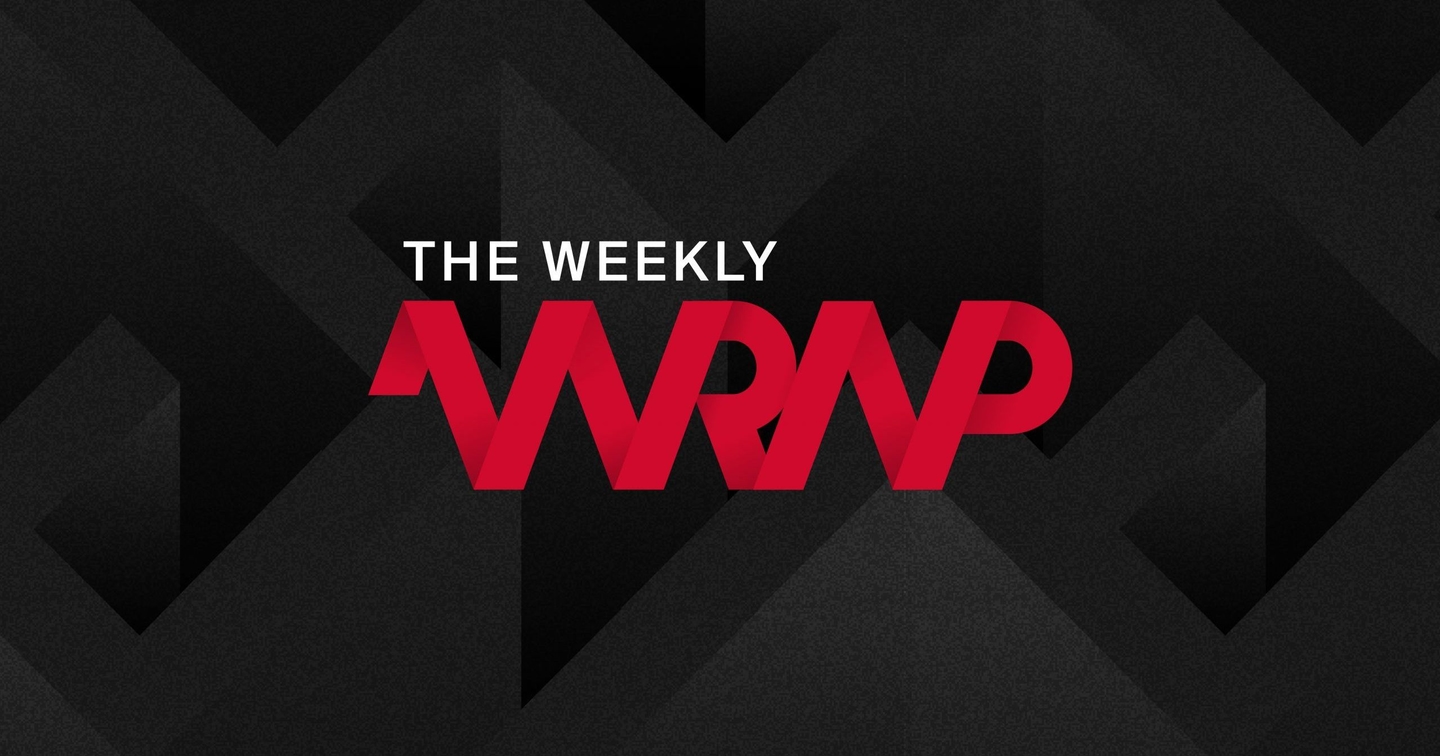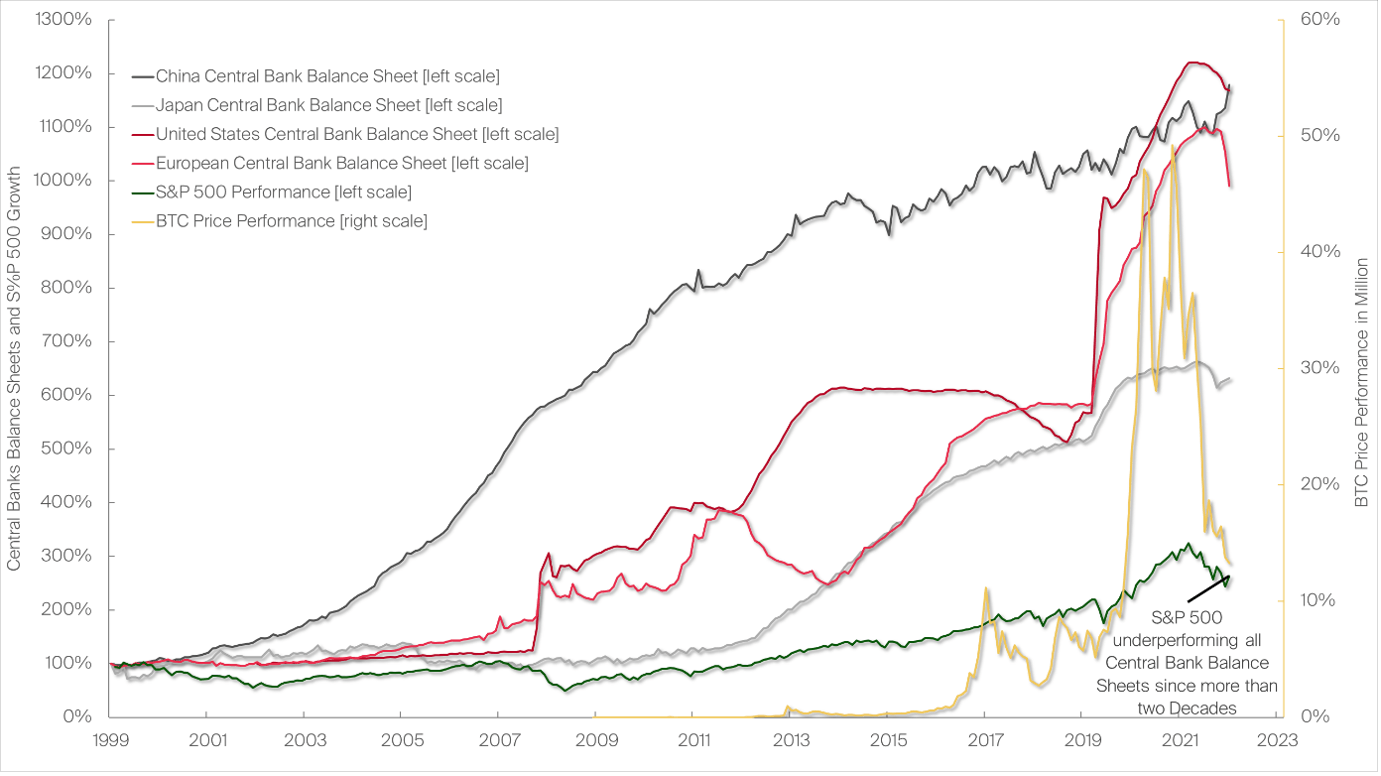
Arbitrum on the rise, Operation Chokepoint 2.0 and Coinbase launching own Layer 2

1. Arbitrum on the rise – surpassing Ethereum in daily transactions
The Facts:
- Ethereum Layer 2 scaling solution Arbitrum is on a seemingly endless growth curve, as it exceeded Ethereum’s main net transactions for the first time this week (1.103 million transactions versus 1.084 million transactions).
- Arbitrum is an Optimistic Rollup which allows for the processing of Ethereum transactions off Ethereum’s main net for a fraction of the cost and time it would take to settle these transactions on Ethereum itself – therefore enabling Ethereum to “scale” and improve overall performance.
- Arbitrum’s transactions almost nine-folded over the past year, while transaction costs even decreased (roughly 100’000 daily transactions, for $165’000 in transaction fees, to 930’000 daily transactions, for $155’000 in transaction fees).
- Arbitrum’s daily trading volume is even exceeding that of Binance Chain, Avalanche or Solana, with the trend of major Layer 2s overtaking major Layer 1 blockchains, being covered in Post Merge Ethereum, from our 2023 Outlook.
Our Take:
- Arbitrum has set a milestone this week, with a Layer 2 blockchain outperforming its underlying Layer 1 blockchain, that is built on.
- It reveals the potential that comes from Layer 2 scaling solutions overall and how they can help the overall performance, in terms of transactions being settled and transaction fees staying cheap, for their underlying smart contract platform.
- With Arbitrum transaction fees currently costing around 10 to 20 cents, compared to Ethereum’s transaction fee of around $5, transacting via Arbitrum is more than 25 times cheaper than opting for base layer transactions.
- Being able to offer cheaper transaction fees is not only attractive from a pure price perspective, but also makes various functionalities economically feasible, which would otherwise be out of scope, such as transactions of a small transfer value, due to excessive fees compared to the value transacted.
- This is one of the reasons why Arbitrum grew especially popular for hosting DeFi protocols, seeing its TVL (Total Value Locked) grow beyond that of major Layer 1 DeFi competitors such as Avalanche, Polygon, Fantom or Solana.
- Overall, the recent growth and adoption of Layer 2s, especially that of Arbitrum, are a clear indicator that they will play a substantial role in future crypto ecosystems, taking larger shares of Market Capitalization, TVL, and total transactions.
- Layer 2s and Arbitrum will be a major sector to watch in the near future, especially for the next bull-run as their developments and adoption is promising, with their fundamentals improving consistently.
I’m hearing examples of companies in the crypto space being debanked by US banks who are caving to political pressure from the left [Authors Note: refers to the current Biden Administration]. If Operation Choke Point taught us anything, it’s that under no circumstances should banks be used as partisan tools to kill legal businesses.
Senator Bill Hagerty on the current Operation Chokepoint 2.0 that is marginalizing the crypto industry, referencing to the prior Operation Chokepoint – via Twitter.
2. Crypto facing headwinds from Operation Chokepoint 2.0
The Facts:
- Operation Chokepoint 2.0 has been termed first by Nic Carter and is describing the current headwinds and regulatory crackdown that the crypto industry is facing by being marginalized from regulators and the financial sector.
- The first Operation Chokepoint started in 2013 as a rogue operation under the Obama administration, with the goal of marginalizing and patronizing certain “high-risk” industries via pressure from the banking sector, with the current Operation Chokepoint 2.0 attempting to circumvent the developments and progression of the crypto industry.
- Banks are pushed by regulators and anti-crypto stance politicians, under the direct guidance of the current Biden administration, to distance themselves from the crypto industry, and stop offering banking services, or suggesting pension funds stay away from crypto.
- The current developments are becoming apparent by banks stopping to custody crypto for their clients, such as Signature Bank, or Moonstone and Citi Bank exiting the crypto industry entirely, with Binance’s partner Signature Bank ceasing transfers to and from the exchange.
- Further developments include the ongoing crackdown on stablecoins, as covered in the Weekly Wrap.
Our Take:
- It is crucial to analyze the current marginalization of the crypto industry by regulators under the guidance of the Biden Administration in the light of the previous, initial, Operation Chokepoint 1.0.
- Back then any industry considered unpopular and ideologically opposed by the Obama administration was simply labeled “high-risk”, which included, but was not limited to the defense industry, payday lenders, ATM operators, fireworks […].
- The consequence has been that legally operating businesses had their banking access cancelled, preventing them from operating their legal and registered businesses in a proper manner.
- The current headwinds for crypto saw similar developments, with banks shutting their doors for crypto businesses for no apparent reason, simply for being labelled “high-risk” by politicians.
- Despite even the IMF recently acknowledging that the perceived risks of crypto for the financial system have not materialized, legally operating crypto businesses have been pushed off-shore over the recent years, due to not being able to operate properly on U.S. mainland.
- The consequence was less regulatory oversight, with many businesses operating under lower standards, increasing the risks for customers and investors and amplifying the overall harm caused so far.
- In light of the current biased Operation Chokepoint 2.0 marginalization attempt, it becomes clear once more that absolute power corrupts absolutely and how the first operation, as the second, can be fittingly described in the same manner, “Operation Choke Point reveals true injustices of Obama’s Justice Department”.
- It can reasonably be expected, that the harsh headwinds and opposition the crypto industry is facing under the current administration are going to continue in the near future, with the influence spreading way beyond U.S. territory, due to its influence over international enforcement bodies, such as the FATF (Financial Actions Task Force), seeking to marginalize anything that is labelled “high-risk” on a given day.
- Nevertheless, there are stark contrasts to the current United States’ approach, as both the U.K. and E.U. are on their way to implement proper crypto regulations as they seem to have noticed – anti-crypto regulation is solely pushing crypto off shore into more friendly jurisdictions that realize the future potential the industry is bringing.
1’103’398
Number of daily transactions settles on Arbitrum on February 22nd, compared to only 1’084’290 transaction settles on Ethereum.
3. Crypto Exchange Coinbase is launching its own Layer 2 called Base
The Facts:
- Crypto Exchange Coinbase built its own Layer 2 blockchain on Optimism, called Base, which will be used as on-chain solution for Coinbase, and an ecosystem for DApps and developers.
- Coinbase is the first institutional player to dive into the Layer 2 space, though currently, Coinbase does not plan to issue a network token for Base.
Our Take:
- With even Coinbase opting to develop a Layer 2 it is evident that the hype, though justified, for Layer 2s has finally rinsed through all segments of the crypto industry.
- As a first it has to be mentioned that it is definitely a smart move of Coinbase to abstain from issuing a token for Base, given the current headwinds the crypto industry and CeFi players in crypto are facing, preventing any potential “unregistered securities selling”.
- Coinbase endorsing Layer 2s is definitely a signal for the industry, especially with the Base Ecosystem Fund that has been announced simultaneously, intended to fund projects being built on Base, which should help the initial adoption stage: whether it will last beyond the financially incentivized stage remains to be seen.
- Despite being built on a fully decentralized existing Layer 2, namely Optimism and its OP Stack respectively, Base is starting out with one sequencer only, a sequencer being the node that actually connects to the Ethereum network, yielding an overall increased risk due to centralization and single point of failure.
- Furthermore, with Coinbase, a centralized and registered U.S. entity behind the initiative, there is a high risk of regulatory scrutiny under the current administrations’ regime.
- Nevertheless, there is a decent potential, that Base may become the entry point and CeFi hub for institutionalized DeFi, offering great potential for adoption going forward.
Outpaced? Central Banks Balance Sheets are growing faster than the leading Equity index: The S&P 500, which underperformed the growth of all major central banks’ balance sheets since more than two decades. The only outperforming asset has been Bitcoin – time to outpace the central banks.

In other news
- Pro-Bitcoin U.S. Congressman introducing bill preventing FED to issue CBDC (via Bitcoin Magazine)
- USDC stablecoin issuer Circle planning to increase staff by 25% (via WSJ)
- SEC and NY regulators oppose Binance’s acquisition of Voyager (via The Block)
- Shanghai testnet scheduled for February 28 (via Coinmarketcap)
- Solana closing its Solana Spaces stores in New York and Miami (via Solana Spaces)
- FTRC investigates Voyager’s alleged unfair crypto marketing (via Cointelegraph)
- Outright ban of „self-hosted” wallets in EU prevented (via The Block)
- Polygon cuts 20% of its staff (via CoinDesk)
Curious what the year 2023 will look like? Read our 2023 Outlook, which has been published last week.
The latest episode of Decrypt titled “Status quo of NFTs – Part II” highlights the breakthrough of NFT markets after the 2021 wave and looks at adoption trends beyond art and collectibles.